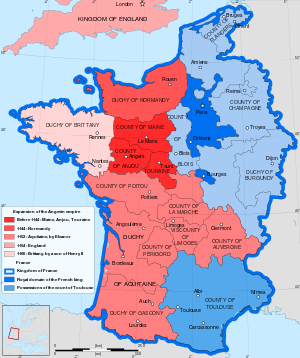The Burning of Notre Dame as Uncanny
When Notre Dame burned and the news filtered out, the first reaction was grief. Then the condemnation of the grief — from a variety of takes — followed by defense of the grief. There was also, in my social media threads, comments about the burning of black churches in St Landry Parish, Louisiana, and the lack of publicly declared sorrow for those churches when they burned. Black and indigenous voices explained how Notre Dame has different resonances and symbolisms, and asked for white folk to listen to that difference.

When I first heard I felt there was something deeply symbolic, poetic, and even prophetic, in the burning. The burning of Notre Dame was odd: after 900 years… now Notre Dame burns? The event struck me as uncanny and strange.
One of the strange things that kept coming up in my social media threads was the claim that Notre Dame was built with slave labor. While there were serfs in medieval Europe, slave labor wasn’t common. When I asked folk for the source of the claim that slave labor was used in the building of Notre Dame, no one gave an answer.
Then the odd claim that Notre Dame was a monument to empire. Those I asked to expand on this claim didn’t or wouldn’t do so. I could see the truth of a claim that Notre Dame was a symbol of the medieval kingdom of France and Philip II and thus the Capetian dynasty. However, the extent of the medieval kingdom of France was hardly extensive and didn’t extend to the current borders of France. In the twelfth century when Notre Dame was begun, France was yet to be a clearly defined territory. There was hardly an empire at the time of its building. However, it is the Capetian dynasty that becomes a colonial power in the early modern period and who aided the English colonists in the Revolutionary war with Great Britain.

This continuity of the Capetian dynasty is a clue to the source of some of these claims. From what I can piece together, there is a conflation and telescoping of history. The kingdom of France, like the kingdoms of Spain, Portugal and Great Britain, would become an empire, colonizing with displacing of indigenous and engaging in enslavement and forced removal of countless Africans. But the European enslavement of Africans and use of African slave labor was still several centuries off when the construction of Notre Dame began and even still a few centuries away when it was completed.
This historical conflation and telescoping is rooted in several things. Most immediately, there is a white attempt to respond to black and indigenous folk pointing out that they don’t necessarily feel the same connection to Notre Dame. The symbolic resonance of Notre Dame for black and indigenous differed from that of many of white European and white Christian folk. Mark Charles put out on his social media presence asking white folk to step back and see why for indigenous folk Notre Dame may resonate as a symbol of the French colonial enterprise and the racism of the “Doctrine of Discovery”. Thus, Notre Dame resonates symbolically with the systematic displacement, ethnic cleansing, and genocide of the indigenous populations of the Americas. However, Notre Dame wasn’t built by the colonizing French, but some four hundred years before the colonization projects of the European white empires — nearly twice as much time elapsed between the beginning of the building of Notre Dame and France as a colonial power as the entire life of the United States as a nation, and was completed 300 years before Europeans began to invade Africa and began the slave trade.
The conflation might also have its roots in the white mythology of Western Civilization that imagined and created whole cloth the idea that there was some grand continuity that was the height of human culture: begun with Athenian democracy, exemplified by the Roman Empire, continued by the warlords of the various Germanic tribes that settled down in much of the former Roman Empire and started speaking Latin, who then founded the dynasties that formed what would eventually become the modern nation states of Europe who became the colonial world powers until WWII. When in fact all of “Western Civilization” is a highly diverse mishmash of languages, cultures, peoples, migrations, and historical periods. And there is no actual historical through-line that can be called a culture or civilization. The Roman Empire that mostly enveloped the Mediterranean Sea, was a completely different thing from anything in Medieval Europe, and even quite different from the true inheritor of the Roman Empire, Byzantium. I lay much of the conflation around this at the feet of the idea of “Western Civilization” as some real sustained continuity rather than recognizing it as a white “Modernist” invention used to justify and undergird the doctrine of discovery and the “white man’s burden”.

While Notre Dame is claimed by “Western Civilization” the creators had no such idea in their heads, and it’s likely that most didn’t even consider themselves to be French. The idea of France was just beginning to be an idea in the thought and actions of the Frankish king Philip II, the first Frankish king to call himself the King of France. No one at this time was calling themselves European or white, or spoke of “Western Civilization”. It is true though, that a line of thought and collective experiences in this period, largely related to the Crusades, become seeds of the idea of “Western Civilization” and “whiteness”. In France, these seeds took root in the soil prepared by Charlemagne’s taking the title of “Holy Roman Emperor” and a pope thinking it was a good idea to crown a Frankish warlord as Roman emperor, though he had no empire, and no connection to ancient Rome . We can find the seeds of the ideas we will come to associate with whiteness, White Supremacy, European colonialism, and the Doctrine of Discovery in this period, but those seeds would take hundreds of years to germinate, sprout and grow into the idea of white European colonial empire.

So, by the time we come to the end of the Capetian dynasty as it leads a Modern and no longer Medieval France into a colonizing settler nation engaging in the transatlantic slave trade, we do have all the elements of “Western Civilization”. France (like all the other European empires) in colonizer fashion lifts up an architecture it has nothing to do with, colonizing its own past, and when it doesn’t find Gothic cathedrals in the Americas — or any other Euro-Christian-type artifacts — then the claim is made that the failure to find what it dreams to be the artifacts of civilization in Africa and North and South America proves a hierarchy of being between the races. This failure to to find what was dreamed up, proves that these “races” are less than human for not producing a Notre Dame.
So it is true that Notre Dame in the hands of the colonial empire of France comes to represent the supposed superiority of white folk and “Western Civilization” over the other peoples of the earth: the Africans, the indigenous Americans, and Asian peoples. Notre Dame and Gothic architecture along with other self-aggrandizing interpretations of European history and Modernist cultural production, is used to devalue, destroy, and ruin the societies, cultures, and peoples that the European powers of France, Great Britain, Spain, and Portugal encounter, conquer, settle, and displace, all with the imprimatur of the Papacy.
European architecture was imposed upon folk. Sacred space had to be conceived in the white European imagination. So, yes to those who suffered and whose people were killed and displaced and enslaved: cultural and religious artifacts like Notre Dame cathedral have the resonances of racism still because white folk used such artifacts to justify their genocidal actions and attempts to rob the colonized and enslaved of their own cultures, imposing European concepts of holy space and architecture in the process.
But it is false to claim that those who built Notre Dame or any of the Gothic cathedrals of Europe had any such ideas in their heads. Now I’m not naive, so I’m not saying the late medieval Europe was some idyllic paradise, the first crusade was proclaimed as Notre Dame was being built. But the Crusades — while they will be used by whites to bolster their sense of rightness as they enslaved Africans and committed genocide against the indigenous peoples in the Americas — aren’t the same thing as colonial expansion in the “Age of Discovery”.
We must admit this complexity and difference without conflating racist resonances due to the colonized use of European cultural artifacts and the meaning these artifacts have outside of their racist use.
In the white responses to and grief over the burning of Notre Dame, we are within the dynamics and processes of white supremacy, not necessarily intentionally, though there was that too. The debate over white grief over Notre Dame points us to the work white folk and white Christians need to do. We need to detach from ourselves and our European cultures and art the continuing effects of whiteness and European colonialism. The problem isn’t with having a sacred, or emotional, or artistic connection to a beautiful and sacred space, but to have that connection without thought of the diversity of meaning that space and architecture might have due to the genocidal actions and ideologies of white Europe. Because we used our cultural and artistic artifacts as part of our ideological and religious justifications of the white colonial enterprise our art, religion, and culture continues to have resonances that are bound up with racism.

So, yes, my dear white folk and white Christians; we have to do the difficult work of decolonizing our art, culture, and religion… even when we grieve. We decolonize not because art and religion as symbolized by Notre Dame is inherently oppressive (as some of us did want to claim) but because to find the beauty and truth of our European cultures we must admit we used them in justifying racism, colonization, genocide and ethnic cleansing, and enslavement of Africans. We decolonize that we may have a non-oppressive humble relationship to our cultures as Europeans. This happens through acknowledging the equal value of black, Asian, LatinX, and indigenous culture and religion. In the case of the burning of Notre Dame it is to find in ourselves the ability to grieve for the burning of black sacred and cultural spaces as much as for the damage to a Gothic cathedral. Not because Notre Dame isn’t beautiful or sacred, but because it was used, centuries after its construction, to say that non-European culture was less human.
